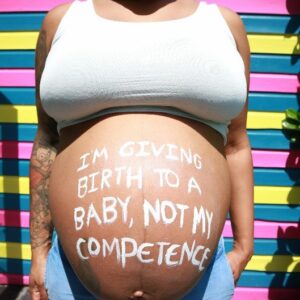by Clare Rawdin, Research Associate, The Open University Centre for Policing Research and Learning
The kidnap, rape, and murder of a young woman in London (March, 2021) saw an outpouring of anger, sorrow and concern about the precarious state of women’s safety. This response was further intensified when it emerged that the crime was perpetrated by a serving Metropolitan (Met) police officer, Wayne Couzens, who had used his warrant card and handcuffs to commit the offence. This incident was not long followed by the conviction of another officer (David Carrick) for a long series of sexual offences committed against twelve women over two decades (BBC, 2023). The notion that these are isolated cases is challenged by a recent survey conducted in one English force that revealed a lifetime prevalence rate for domestic abuse of 22% amongst the police workforce (Brennan et al, 2024). So what is being done in response to the problem of police-perpetrated domestic abuse (PPDA)?
Following the murder of Sarah Everard, both a review and an inquiry were established. The first part of the Angiolini inquiry was published earlier this year and issued 16 recommendations for policing, including enhanced information-sharing and vetting procedures (Angiolini, 2024). The College of Policing (CoP) has accepted these recommendations in full and is currently working towards embedding them within their policies and procedures. Also, the Casey review was commissioned to assess the internal structure and standards, specifically within the Met (Casey, 2023). It found evidence of institutionalised sexism and a culture of misogyny. In addition, a recent Home Office report issued in response to a super-complaint (CWJ, 2020) concurred with many of the overarching concerns raised by the Centre for Women’s Justice in relation to improper police responses and decision-making following complaints of PPDA. The report concluded that such responses were “a feature of policing that [are] significantly harming the interests of the public” and considered that victims of PPDA needed to be offered better support (Home Office, 2023).
To these ends, CPRL researchers have been collaborating with colleagues from the University of South Wales on a process evaluation led by Dr Sarah Wallace of an advocacy support service for survivors of PPDA, referred to as Tabw, where both victim-survivors (and suspects) are serving police personnel within these forces. This 2-year pilot initiative was launched in two Welsh force areas – South Wales and Gwent – in September 2023 and is being implemented by local domestic abuse charities. A theory of change (ToC) underpins the development and implementation of the service which has clarified a shared vision between officers and advocates focused on working to bring about individual and institutional change towards the reduction of PPDA. Findings from an online survey with survivors and interviews with a range of stakeholders highlighted a ‘survivor-first’ service which is valued for its independence from policing agencies, and in which survivors feel strongly that they are heard and believed.
Implementation and delivery of Tabw has not been without its challenges, for example, managing its referral pathway, dealing with counter-allegations, and working with a greater diversity of survivors, notably from the gay and lesbian community. Early indications suggest that Tabw seems to be adapting positively and swiftly to these challenges as they arise, aided through the effective partnerships with policing (especially Professional Standards units) and wider community partners.
Time will reveal to what extent Tabw has achieved this vision and associated ToC outcomes. But what is clear is that work with survivors is one (albeit important) part of a comprehensive response to PPDA – we need to work with perpetrators too.
References
Angiolini, E. (2024) The Angiolini Inquiry: Part 1 Report. Available at: The Angiolini Inquiry – Part 1 Report (publishing.service.gov.uk) (Accessed: 7/6/2024).
BBC. (2023) Met Police: The ‘dark corner’ of the force where Wayne Couzens worked. Available at: https://www.bbc.co.uk/news/uk-65017475 (Accessed: 7/6/2024).
Brennan, I., Couto, L., and O’Leary, N. (2024) ‘Prevalence and patterns of domestic abuse victimisation in one English police workforce’, Policing & Society, Vol. 33(6): 703-716.
Casey. L. (2023) ‘An independent review into standards of behaviour and internal culture within the Metropolitan Police Service: Final report.’ Available at: https://www.met.police.uk/police-forces/metropolitan-police/areas/about-us/about-the-met/bcr/baroness-casey-review/. (Accessed 7/6/2024)
Centre for Women’s Justice, CWJ. (2020) Police-perpetrated Domestic Abuse Super-complaint. Available at: https://www.centreforwomensjustice.org.uk/news/ (Accessed 7/6/2024).
Home Office. (2023) Police perpetrated domestic abuse: Report on the Centre for Women’s Justice super-complaint. Available at: https://www.gov.uk/government/publications/police-super-complaints-force-response-to-police-perpetrated-domestic-abuse/police-perpetrated-domestic-abuse-report-on-the-centre-for-womens-justice-super-complaint (Accessed: 7/6/2024)

